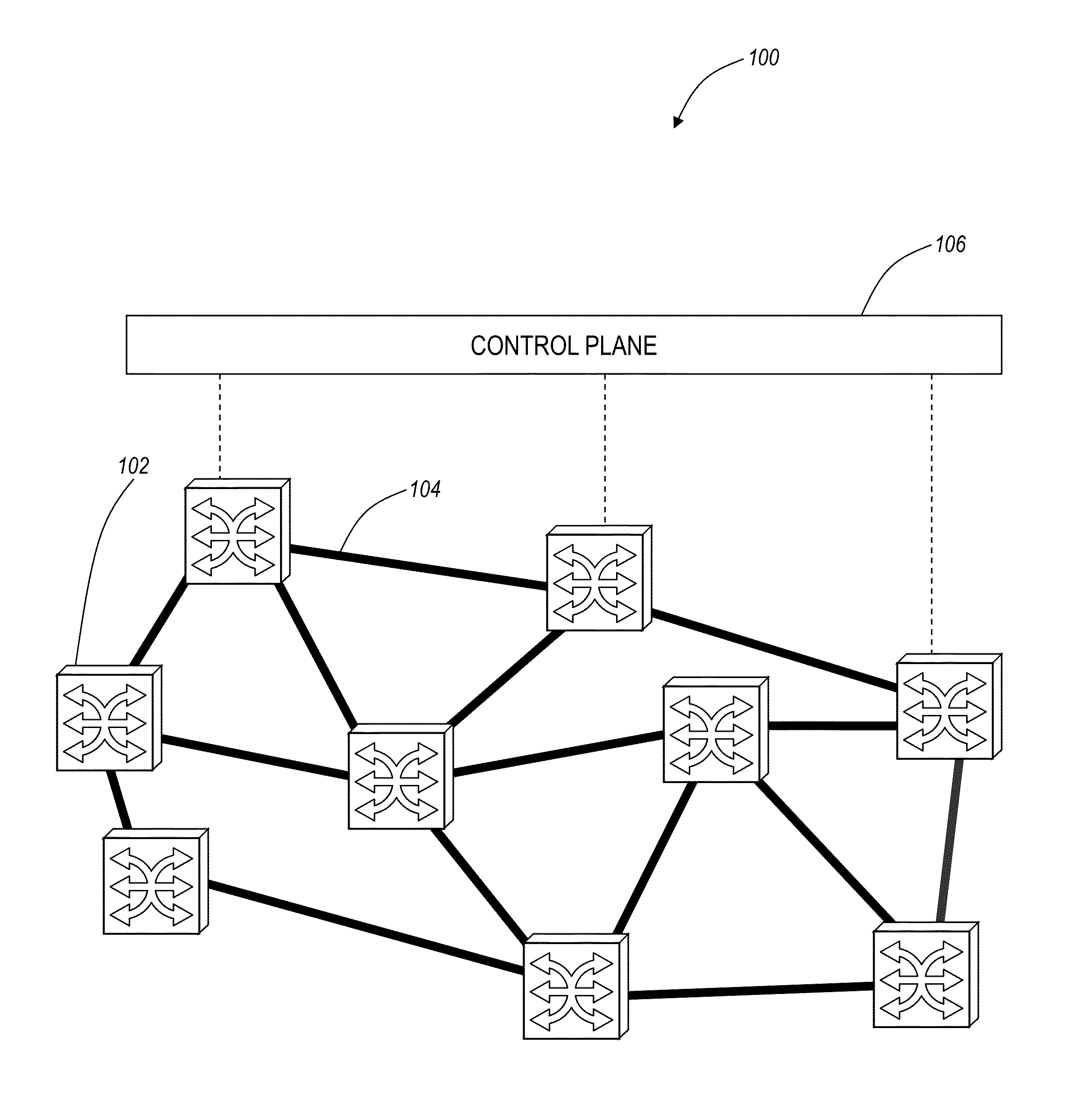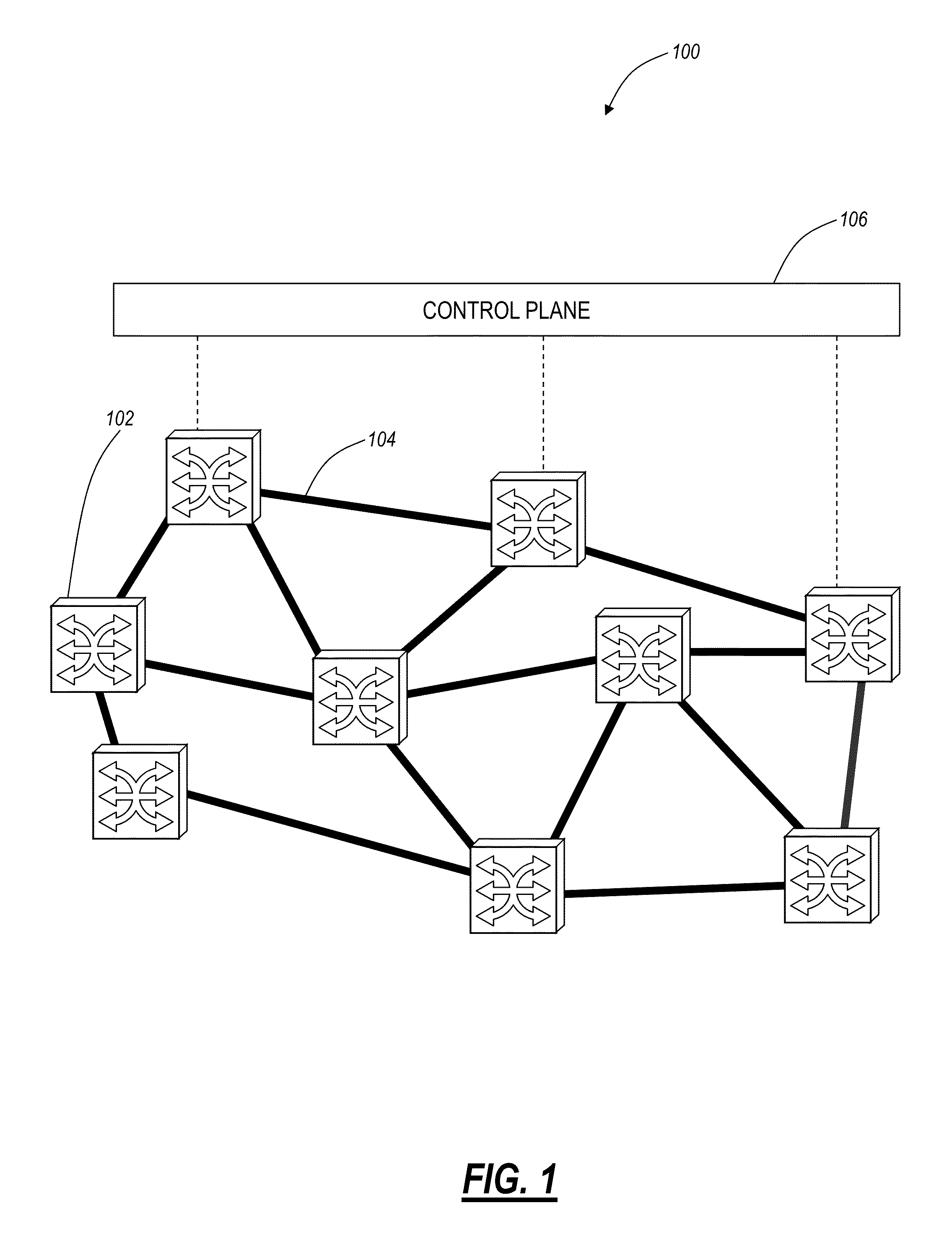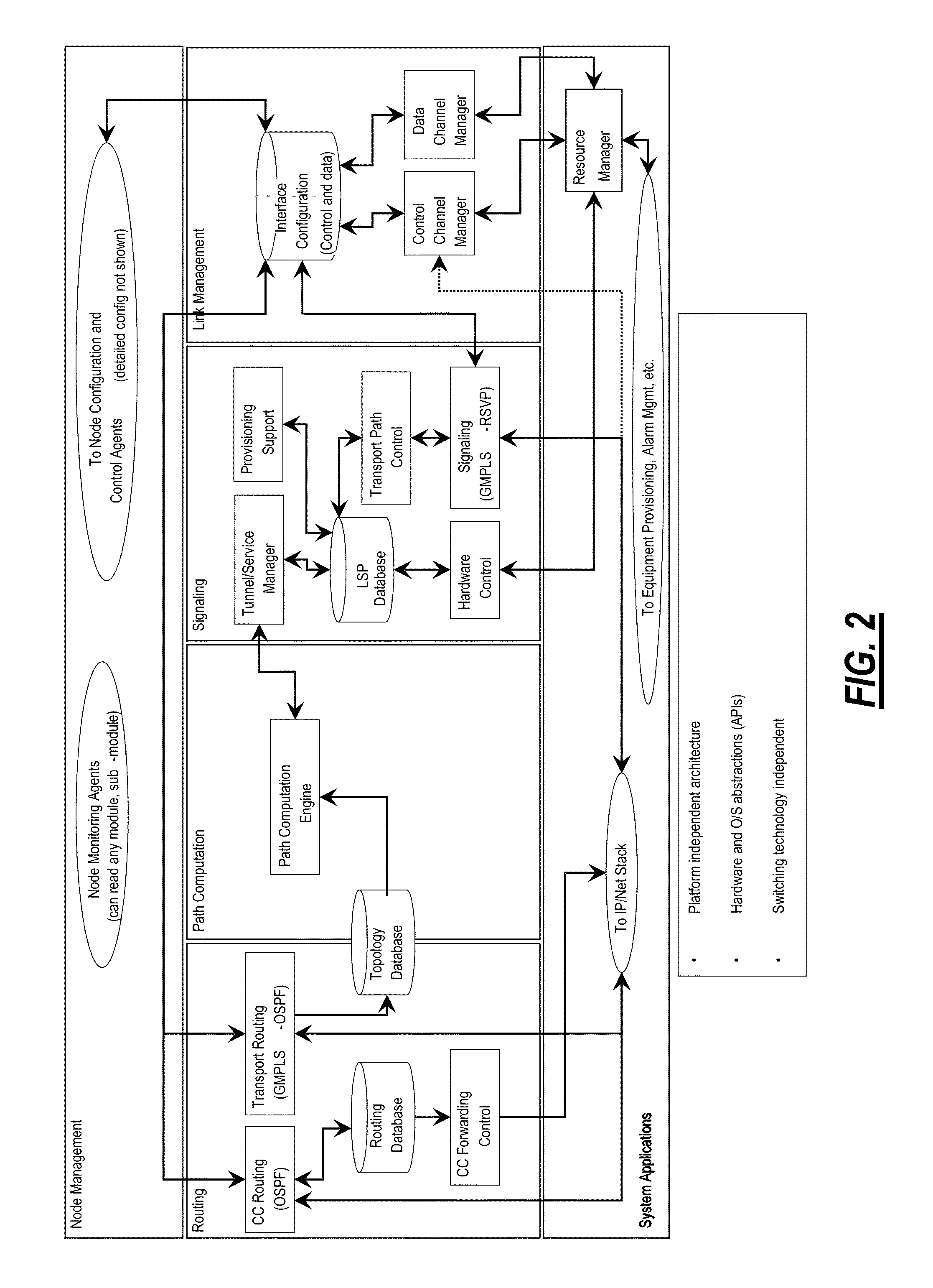Coherent probe and optical service channel systems and methods for optical networks
a technology of optical network and optical service channel, applied in the field of optical network and system, can solve the problems of limited pre-fec bit error rate (ber) accuracy, limited current state of optical fiber and installed equipment, and low data ra
- Summary
- Abstract
- Description
- Claims
- Application Information
AI Technical Summary
Benefits of technology
Problems solved by technology
Method used
Image
Examples
Embodiment Construction
[0035]In various exemplary embodiments, the present invention provides dynamic performance monitoring systems and methods for optical networks that allow optical network health to be ascertained in a flexible and accurate manner. The present invention introduces accurate estimations for optical channel performance characteristics based either on existing channels or with a dynamic optical probe configured to measure characteristics on unequipped wavelengths. Advantageously, the dynamic performance monitoring systems and methods introduce the ability to determine physical layer viability in addition to logical layer viability. The present invention provides span-by-span or section-by-section optical characterization of and nodal communications within a terrestrial or submarine fiber optical transmission system over the life of the system.
[0036]The present invention includes an optical probe element positioned at various points throughout the optical network. The optical probe include...
PUM
 Login to View More
Login to View More Abstract
Description
Claims
Application Information
 Login to View More
Login to View More - R&D
- Intellectual Property
- Life Sciences
- Materials
- Tech Scout
- Unparalleled Data Quality
- Higher Quality Content
- 60% Fewer Hallucinations
Browse by: Latest US Patents, China's latest patents, Technical Efficacy Thesaurus, Application Domain, Technology Topic, Popular Technical Reports.
© 2025 PatSnap. All rights reserved.Legal|Privacy policy|Modern Slavery Act Transparency Statement|Sitemap|About US| Contact US: help@patsnap.com



